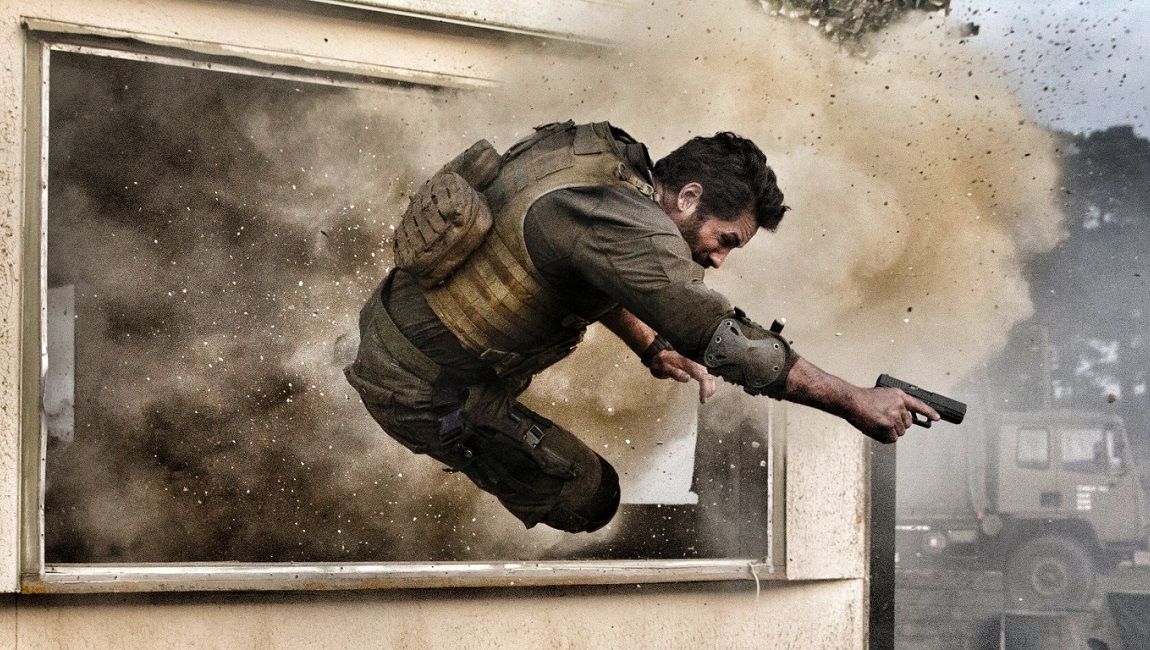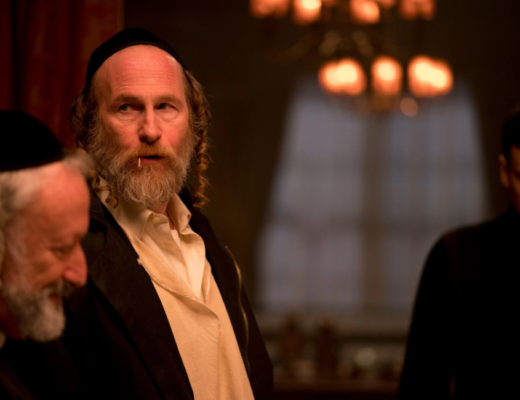One Shot employs its titular gimmick to no discernible value, but its actioner bona fides offer top-notch DTV thrills.
Over the course of the last decade or so, Scott Adkins has staked his claim as the premier star of the DTV action scene. A remarkable athlete with marquee good looks and an intimidating physique, it’s surprising that he hasn’t carved out a more lucrative, Statham-type career. Still, the mainstream’s loss is the action fanatic’s gain, as Adkins continues to pump out above average genre pictures at a remarkable pace (while occasionally popping up in small roles in higher profile pictures like Expendables 2, Zero Dark Thirty, and Doctor Strange). Of course, part of the charm of the DTV scene is the direct correlation between low budgets and high ambitions; the trifecta of Adkins’ Undisputed II, Undisputed III, and Boyka chart the evolution of a second-rate villain into a bonafide icon of underground pit fights, while films like The Debt Collector, Avengement, and Accident Man mix genuinely clever plotting with low-key charm and extreme violence, even allowing Adkins to display some surprisingly deft comedic chops. His new starring vehicle One Shot is an altogether more serious affair, attempting to blend action thrills with a damning look at the U.S. military’s inhumane treatment of detainees and terror suspects. Directed by James Nunn, who’s worked previously with Adkins on Eliminators (2016) and Green Street Hooligans 3: Never Back Down (2013), One Shot is another entry in the once-trendy, now mostly tired single-take films canon, where the entire movie appears to be one unbroken, continuous shot. Of course, that’s not really the case, as modern digital editing programs and special effects have made it easier than ever to hide cuts and suture different scenes together. In other words, as the degree of actual technical difficulty has gone down, so has the novelty of the technique. Still, the overall paucity of means on display here makes One Shot more interesting than something like the massively scaled 1917, which uses its huge budget and unlimited resources in service of pure Oscar bait, war-is-hell cliché. One Shot is after more visceral, less emotionally manipulative thrills, content to give audiences all the shoot-outs and hand-to-hand combat we expect from an Adkins project.
Here he’s playing Navy SEAL Lt. Jake Harris, who is shepherding his team and a young CIA analyst named Zoe Anderson (Ashley Greene) to an Army Black site. Any similarities to Guantanamo are clearly intentional, as orange jumpsuit-clad prisoners are caged and casually tortured under the auspices of national security. The CIA is there to extract a suspect who might have information about an impending terrorist attack on American soil. The man in question, Amin Mansur (Waleed Elgadi), swears he is innocent of whatever the government suspects him of doing, and has no information about any kind of upcoming attack. Station head Jack Yorke (a largely disinterested Ryan Phillipe) is reluctant to release the prisoner, and insists on stonewalling Anderson. While the bureaucrats argue, a team of mercenaries descend on the prison and all hell breaks loose. It’s a reasonably brisk set up, hampered only a bit by the one-take gimmick — certainly, a few more passes at some of these dialogue scenes might have done the performers some favors. But once the action starts, it’s relentless. The mercenaries will stop at nothing to capture Mansur for themselves, suggesting he knows more than he’s letting on, while Harris is determined to keep the suspect and his men alive.
Once the assault begins in earnest, One Shot turns into a siege film, with Harris, Anderson, Mansur, and the other SEALs holed up in a communications bunker while wave after wave of bad guys try to breach the perimeter. At the film’s best, one frequently forgets about the one take gimmick and is instead simply immersed in the cacophony of gunfire and explosions, the mobile camera snaking and threading down hallways and around corridors tracing the movements of various characters. The seams begin to show when Adkins has to leave the bunker and take the fight outside, the camera forced to tag along and let the pace slacken when a hard edit would have sufficed. Still, it’s a minor quibble, as Nunn stages all manner of stealth attacks and grappling with an eye towards spatial clarity. There’s one climactic battle that is damaged by the no-edit edict, a fist fight that Nunn is forced to shoot from behind a chain link fence since he can’t simply cut closer to the action. Adkins makes the most of it, and is talented enough to sell the choreography through an extra layer of visual bric-a-brac, but it speaks to the sometimes unintended consequences of committing oneself to an extremely specific visual aesthetic. One Shot is a brutal film — not all of the cast will survive — and even manages a clear-throated critique of American interventionism in the Middle East, bluntly stating that many of our problems are of our own making. And like the best DTV movies, there’s a blunt clear-sightedness on display that is leaps beyond the more refined niceties that make mainstream action stuff more palatable but often less intense. Adkins fans rejoice — the king is back.







